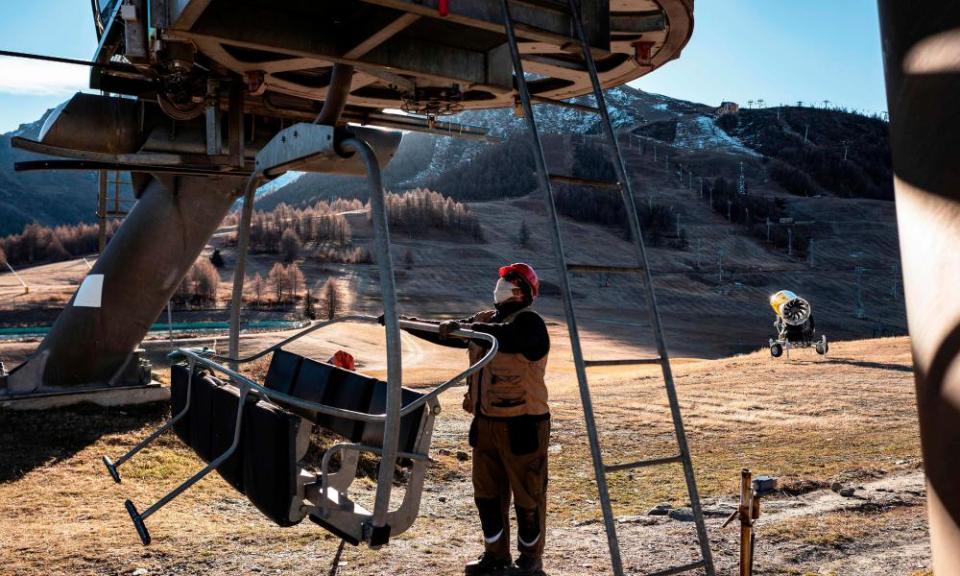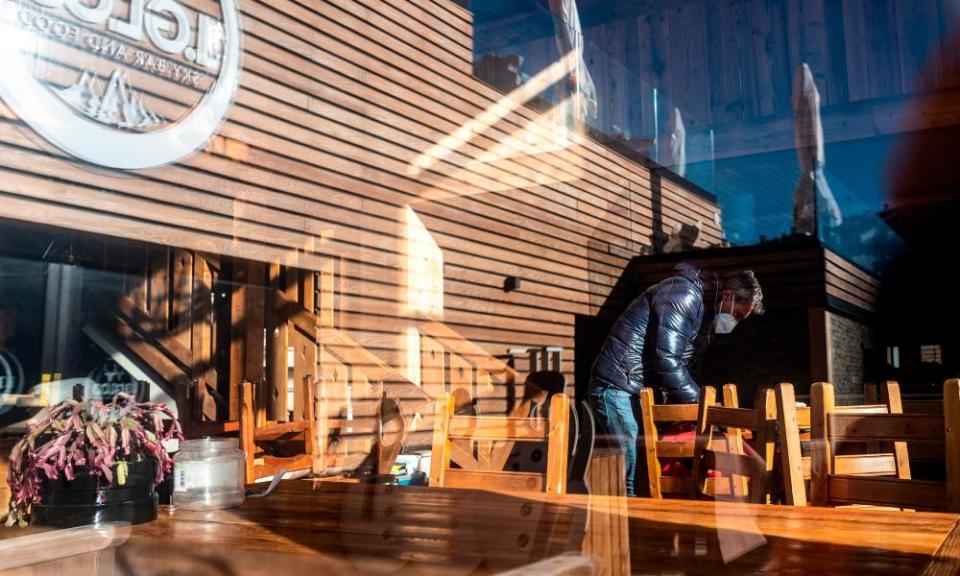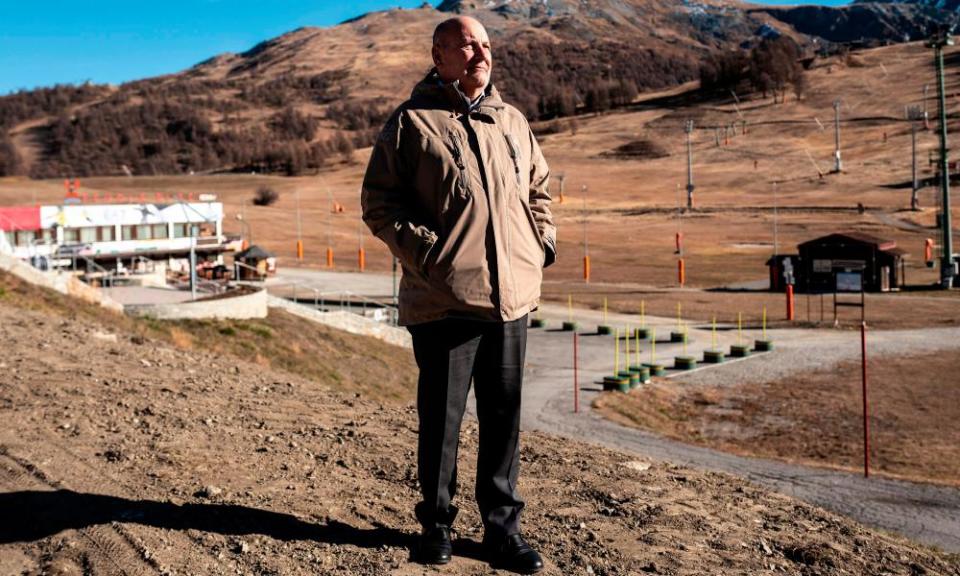'If the EU says we can’t open, they should pay': Italian ski resort awaits Covid ruling
Paolo Di Bendinoni’s grandmother Adelina began the family’s ski hire business in the winter of 1964, when she kept a few pairs of wooden skis and boots in her home that she would rent out to tourists as they got off the bus by the square in the alpine village of Sestriere.
In the early days her trade came only at weekends, when a smattering of visitors would travel up from the nearby city of Turin. But as the village became more popular for skiing over the ensuing decades, the business flourished.
Di Bendinoni has worked for Noleggio sci Nonna Adelina since he was 18, and now runs it with his wife. All of his cousins are ski instructors. The family is emblematic of the village of 929 inhabitants, whose livelihoods depend on the ski industry.
That the season, which would ordinarily begin next week, is under threat this year owing to coronavirus restrictions is causing much anxiety.
“I have never not known a ski season,” said Di Bendinoni. “Even the years when there was little snow, we always had business. We work four months a year, seven days a week. The village basically survives on those few months of total activity.”

Sestriere and other ski resorts across Italy are on standby as European leaders try to reach an agreement over whether or not to ban ski holidays over Christmas and NewYear period. The Italian prime minister, Giuseppe Conte, along with the German chancellor, Angela Merkel, and the French president, Emmanuel Macron, are in favour of shutting down winter sports until 10 January to limit the spread of Covid-19, while the Austrian and Swiss governments are against it. Austria’s finance minister, Gernot Blümel, said that if the EU really wanted to close a sector that would cost his economy €2bn (£1.8bn), then it should foot the bill.
“In Italy we’re in limbo, when you don’t know what will happen from one day to the next,” said Fiorenzo Gallice, Di Bendinoni’s cousin and a ski instructor. “The way I see it, we should respond in exactly the same way as the Austrians – if the EU says we can’t open, then they should pay for it.”
Sestriere sits at an altitude of just over 2,000 metres and forms part of Via Lattea, Italy’s third largest ski area, which comprises the towns of Claviere, Sauze d’Oulx and Pragelato as well as the French resort of Montgenèvre.
When the ski season is underway, the population in Siestriere often swells to 20,000 a day, many coming from Britain, with the busiest period being Christmas and New Year.
Italian ski resorts, which between them bring in about €11bn in revenues a year, were already dealt a blow after having to abruptly close in March when the first wave of the pandemic took hold. Gallice said Sestriere’s inhabitants and businesses received a pittance in financial support.
“Some got €600, others €1,200,” he added. “We’re in a really tragic situation. I really hope that I don’t discover that friends have killed themselves because they couldn’t carry on. We’re at that level and politicians need to understand.”
Gianni Poncet, the village’s mayor, said that ski resorts would end up like ghost towns if the season was cancelled.

With 217 miles (350km) of slopes in Sestriere, Poncet said skiers could easily socially distance. He pointed to the summer, when the mountains were busy with hikers but did not cause a spread of infections.
“We’re doing everything to make sure that at least some of the ski lifts can open,” Poncet said. “That’s the only solution we can foresee, and to do it securely. If you think about who works on the ski lifts or teaches skiing, or in the bars and restaurants – across the whole of the Piedmont region, if this machine doesn’t begin we will lose €1bn.”
Antonio De Luca, the owner of Bar QB, which serves breakfast and lunch and is a popular après-ski spot, said: “There is a lot of pessimism even as we continue to hope that things will be resolved, or that we can at least salvage what can be salvaged of the season.”

Whatever the EU decides, it is difficult to ignore that the continent is in still in the middle of a severe second wave of the pandemic. Italy registered 29,001 new infections on Thursday and 822 Covid-related fatalities, bringing the country’s total number of coronavirus deaths to 52,850. As hospitals remain overwhelmed, Conte urged Italians not to ski during the Christmas holidays. Italy reopened slopes in October only to close them after images emerged of packed ski lifts.
But the president of Sestriere Spa, which manages 56 ski lifts across Val Lattea, said he was certain people could ski in safety if things were done well, and that the company, which has 350 full-time staff, had come up with a plan whereby the number of ski lifts that open would depend on what the travel restrictions were.
“Even if people from abroad can’t come, we could open 20 ski lifts that could serve people coming from Lombardy, Tuscany and Liguria,” Giovanni Brasso said. “In the event of interregional travel being banned, we would open only 10 lifts.”
He said police could be brought in to ensure rules are maintained and crowding is avoided: “We’re at over 2,000 metres high and people who come already have glasses, hats, gloves … and with masks too, I believe the mountains are one of the least risky places.”


